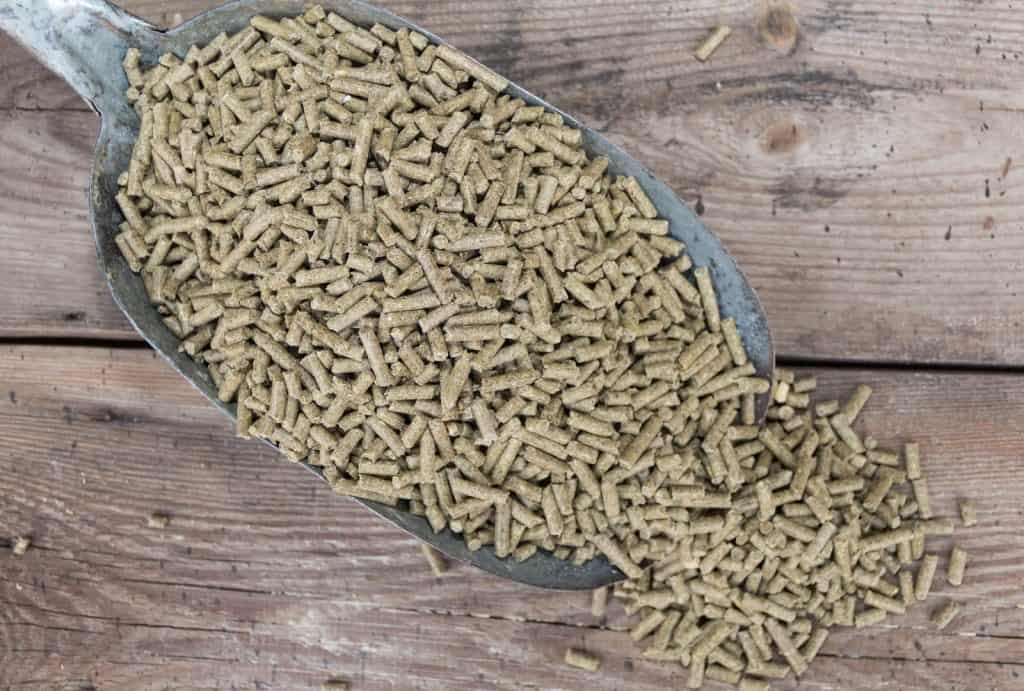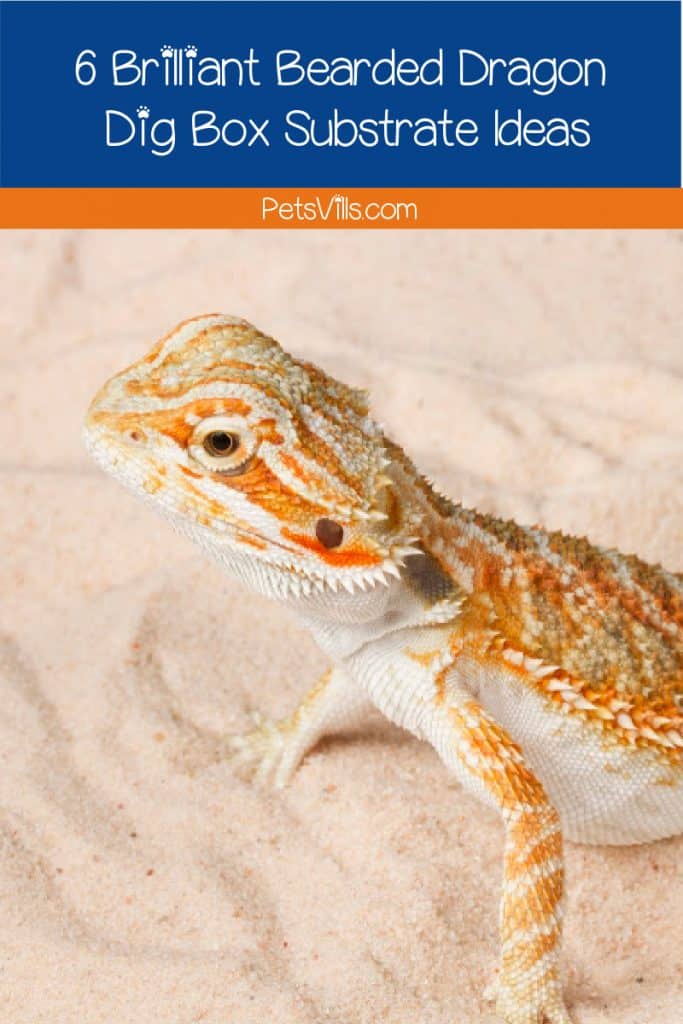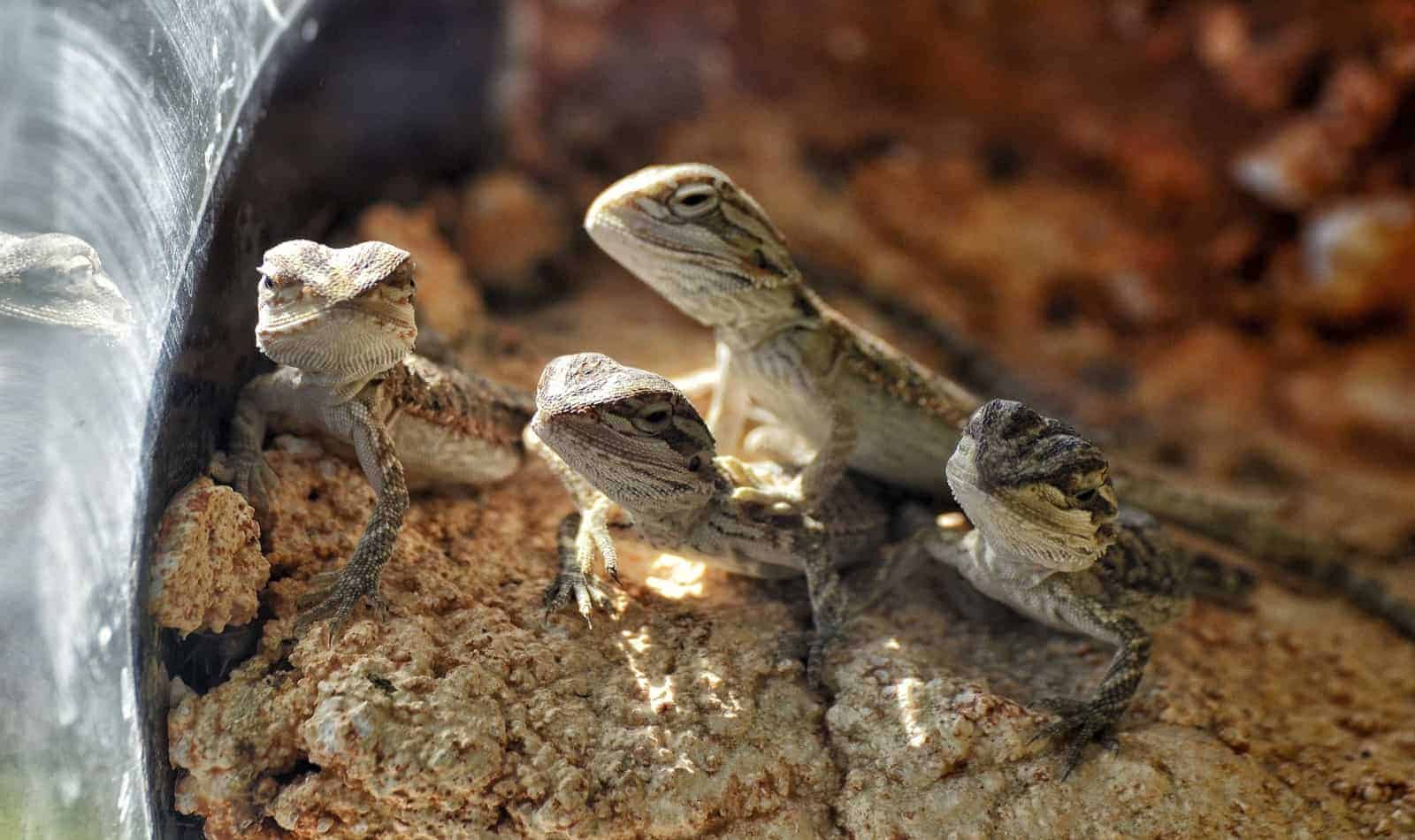Want to learn about bearded dragon dig box substrate?
Already know what it is, but not sure which type is the best?
Either way, I’ve got you covered!
Below, I’ll take you through all kinds of different substrates and give you the pros and cons of each, as well as recommendations.
This post contains affiliate links. We earn a commission if you make a purchase at no extra cost to you.
ALSO CHECK: The Best Basking Lamp for Bearded Dragon
Table of Contents
Our Top Picks
Check out the table for a quick overview of these substrates, then read on for more details!
Table could not be displayed.What is Substrate?
Put in the simplest terms, substrate is to your bearded dragon’s habitat as a floor is to your home.
You wouldn’t dream of walking around on concrete or whatever other type of subfloor your home uses, right?
Not only is it potentially unsafe, but it’s not exactly homey!
Well, your bearded’s substrate to be something that allows them to feel at home and is safe too.
To be clear, a substrate is a material that’s put on the floor of your bearded dragon’s dig box and can be referred to as beddings too.
While you can theoretically line the dig box with anything, only a few types of substrate are actually safe.
And not all of them work very well for them, so you’ll need to get all the facts right to ensure you get the best.
Types of Bearded Dragon Substrates
Before we get to the list of the best-bearded dragon substrates, it’s important to note that we have two main categories.
- The loose particles substrate
- Non-particle substrate
The Loose Particle Substrate
Unfortunately, many bearded dragon owners strongly advise against the loose particle substrates.
This is because they feel like the particles may come in contact with the nose and eyes of the beardies causing infections.
This is especially with the baby bearded dragons who may ingest the particles because they’re not good hunters yet.
Yet, some bearded dragon owners still swear it works well for them.
If you decide to use the loose particle substrate, I suggest keeping a close eye on your beardie. And avoid using it for bearded dragon babies.
Some of the popular loose particle substrates include:
Bark, Wood shavings and Wood Chip
These are not good substrates because they trap fluids at the bottom of the layer, which becomes a breeding field for pathogens.
Many kinds of wood will also irritate your beardie’s skin and can pose a health risk if consumed.
Alfalfa Pellets
Alfalfa pellets are better in terms of safety because they’re not harmful even when consumed.
Yet, when the defeats mix with moisture; they form molds, which is both unsanitary and unhealthy to feed on.

Corn Cob and Walnut Sand
Both of these are dangerous because:
- They’re sharp and abrasive
- They’re a perfect breeding ground for pathogens, bacteria, and fungus
- Associated with impaction.
Calcium Sand
You’ve probably read about the benefits of calcium sand, and you’ve seen it’s rich in magnesium, strontium, and potassium.
But it’s good to keep in mind that a substrate isn’t a dietary supplement. And calcium carbonate is designed for ingestion and not for the skin.
It causes dry skin and has even been accused of causing skin color change and eye irritation. It’s probably best to work with other substrate options.
Non- Particle Substrate
As the name implies, the non-particle substrate is a solid of something. These substrates are a better option for your dragon, especially in terms of safety.
One, the non-particle substrate doesn’t get stirred easily, so they are at no risk of irritating your beardie’s nose or eyes.
And second, they’re easy to clean, so they don’t encourage parasites or pathogens.
Some of the popular substrates in this category include:
- Rubber shelf liner
- Reptile carpet
- Newspaper
- Rubber shelf liner Ceramic tile for bearded dragons.
I’ll not expound on these substrates because most of them are in the next section.
Best Bearded Dragon Dig Box Substrate Options
So, what did I consider when choosing the best-bearded dragon dig box substrates? I went for options that are;
- Accessible
- Affordable
- Safe
- Easy to clean and maintain
Below are my options.
1. Rubber Shelf Liner
You’ve probably never heard of this one because it’s a new discovery that’s both easy to clean, inexpensive, and safe.
The other great thing is that it can stay for several years, so it’s pocket-friendly.
Pros
- Easy to clean and only needs a deep clean once a week
- Durable
- Cheap
Cons
- Relatively new, so not a lot of feedback
- Not actually designed for pet use
Buy the rubber shelf liner on Amazon.
2. Newspaper, Paper Towels and Paper
These are obviously the most affordable options, and the beauty of it is that cleaning the cage will be easy-peasy.
They’re a perfect choice for beardie owners who have a busy schedule and want an easy way to clean the cage.
It’s also an excellent substrate option when your beardie is sick, and their cage needs frequent cleaning.
You can also use the paper option when you’re on a tight budget or buying time before setting up a better substrate for your beardie.
Just make sure you regularly read to ensure you have enough paper to change any soiled newspaper to avoid germs in the cage.
Pros
- Makes cleaning easy.
- Most options are free or cheap.
Cons
- Insects may hide behind or below it.
- Ink can run if you use newspapers
- Paper towels can get pricey, especially these days with pandemic-driven shortages.
CHECK: Best UVB Light for Bearded Dragons
3. Reptile Carpet
This is one of the most popular substrates, and it does match the hype. The best part is that it’s solid, so you’ll never have to worry about your beardie chewing on it.
And it has absolutely no known health risks. And when it comes to fitting, it can be easily customized to fit any of the best bearded dragon cages.
The deal breaker is that it’s not very easy to clean, and you really have to do the cleaning properly to ensure it doesn’t stink.
I recommend buying two reptile carpets so that your beardie can still enjoy the comfort of their tank when you’re cleaning.
Pros
- No known health risks to your bearded
- Chew-proof (or at least highly resistant)
- Made from natural materials
Cons
- Harder to clean
- Quick to grow mold if you don’t keep up on cleaning.
Check out what other beardie owners are saying on Amazon.
4. Bearded Dragon Substrate Tiles
All tiles, including the slate tiles pictured here, work very well as a bearded substrate.
Tile substrates are highly recommended because they are permanent. They’re also easy to clean and require low maintenance.
And if you hate trimming your beardie’s claws, this substrate will do it for you.
If you realize your tiles are a bit slippery, just add some topsoil with a non-toxic adhesive.
There will be no risk of the bearded dragon eating the sand since it will be glued and the substrate gains a little grip.
Bonus Tip: You don’t want to buy tiles only to find out they don’t fit in the tank.
An excellent way to avoid this is by taking the tank’s inner measurements before placing an order since most tank dimensions are measured from outside.
But where do I buy the tiles? You can find the tiles in hardware, but consider ordering from a tiles store if the prices are exaggerated.
Pros
- Long-term solution
- Very safe
- VERY easy to clean and maintain
Cons
- Can be slippery
- May be pricey, depending on the tiles
5. Clay Substrate
I love this option because it’s both a substrate and a way to entertain your beardie. A clay substrate allows you to create some hills and tunnels for your pet.
If you’re willing to create an adventurous home for your beardie, the excavator clay is the best for the job.
Note that depending on the cage’s size, you may need up to 20 pounds. However, it works very well with tiles, so you can consider using it in some parts of the cage only.
Pros
- Safe
- Actually entertaining for your pet
- Easy to clean and maintain
Cons
- You need a lot of it
- Costly
Buy the excavator clay on Amazon.
6. Artificial Grass
This is another excellent option, and it can be used together with tiles. This gives your beardie different substrate variations.
Artificial grass is easy to clean because you can simply take it outside and hose it. That said, ensure you deep it in a bucket with a disinfectant to ensure it’s bacteria-free.
It’s advisable to keep multiple artificial grass pieces to ensure your beardie has one during cleaning days.
Pros
- Non-toxic
- Eco-friendly
- Very comfortable
Cons
- Works best when combined with tile
- Can be expensive depending on how much you need.
Buy artificial grass from Amazon.
Frequently Asked Questions
Here are popularly asked questions regarding bearded dragon dig box substrate.
How do I clean a reptile carpet?
Ensure you remove the carpet for cleaning before it gets too messy. Throw the carpet in your wash and clean it with mild fragrance-free soap and hot water.
Beyond that, also make sure you follow manufacturer instructions.
How do I clean a ceramic tile for bearded dragons?
First, make sure you remove waste daily. For a quick clean, use a mixture of water and vinegar to clean the tiles.
Give the tiles time to dry before placing them back in the tank.
It’s also advisable to bake the tiles for 30-60 minutes at 250 degrees to kill any germs at least twice a month.
How do I clean loose particle substrates?
Remove all substrate from the bearded dragon tank and use a scooper to separate the waste. It’s impossible to remove all the waste, which is why we don’t recommend it.
Bearded Dragon Dig Box Substrate (Final Words)
Just like humans, beardies also appreciate having a comfortable substrate to lay on.
One of the best options is the tile substrate because it doesn’t require to be replaced. You can add artificial grass on top to give your beardie two different options.
If you’re on a tight budget, you can try the newspaper substrate as you save up for a better option.
I hope you have a clear understanding of how to choose a substrate for your beardie’s dig box.

Which bearded dragon dig box substrate do you love most? Share below!


